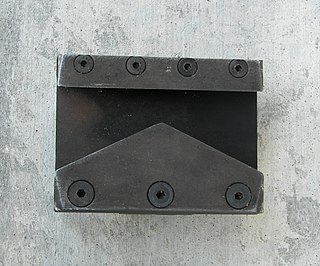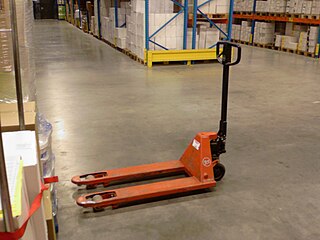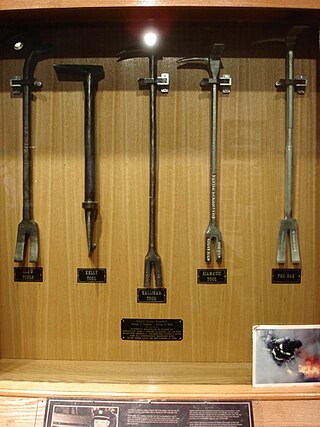Related Research Articles

The September 11 attacks on the World Trade Center elicited a large response of local emergency and rescue personnel to assist in the evacuation of the two towers, resulting in a large loss of the same personnel when the towers collapsed. After the attacks, the media termed the World Trade Center site "Ground Zero", while rescue personnel referred to it as "the Pile".

Communication problems and successes played an important role during the September 11 attacks in 2001 and their aftermath. Systems were variously destroyed or overwhelmed by loads greater than they were designed to carry, or failed to operate as intended or desired.

A fire hydrant, fireplug, or firecock (archaic) is a connection point by which firefighters can tap into a water supply. It is a component of active fire protection. Underground fire hydrants have been used in Europe and Asia since at least the 18th century. Above-ground pillar-type hydrants are a 19th-century invention.

The New York City Fire Department, officially the Fire Department of the City of New York (FDNY) is the full-service fire department of New York City, serving all five boroughs. The FDNY is responsible for fire suppression and fire prevention, and is a major provider of EMS services in New York City. Beyond fire suppression and EMS, the FDNY is responsible for a broad range of services, including technical rescue, CBRN defense, and structural collapse response and analysis. The FDNY is equipped with a wide variety of general-purpose and specialized Vehicles,Tools and Equipment to serve its varied missions.

A Halligan bar is a forcible entry tool used by firefighters.

The K-tool, also known as a "K-spreader" or a "K-tool spreader," is a specialized forcible entry tool used by firefighters to gain access to buildings or other structures in emergency situations. It is named for its distinctive "K" shape, which allows it to be used for a variety of purposes. It is used in conjunction with a Halligan bar and a flat-headed axe or maul to remove a cylinder lock. It consists of a steel block roughly 3 inches by 3 inches by 1 inch thick with a K-shaped notch on one side, having sharp edges that grip the cylinder, and a U-shaped flange on the other side. The notch is slipped over the lock cylinder, then forced down by striking with the flat side of the axe or maul. The halligan is then inserted into the flange and used to pry the K-tool off the door, thereby pulling the entire key cylinder out. The bolt is then retracted from the inside of the cylinder hole using a turning tool, such as a screwdriver.

A fireboat or fire-float is a specialized watercraft with pumps and nozzles designed for fighting shoreline and shipboard fires. The first fireboats, dating to the late 18th century, were tugboats, retrofitted with firefighting equipment. Older designs derived from tugboats and modern fireboats more closely resembling seafaring ships can both be found in service today. Some departments would give their multi-purpose craft the title of "fireboat" also.

A PASS device, also known as a Distress Signal Unit (DSU) or ADSU, is a personal safety device used primarily by firefighters entering a hazardous or Immediately Dangerous to Life and Health (IDLH) environment such as a burning building. The PASS device sounds a loud (95 decibel) audible alert to notify others in the area that the firefighter is in distress. On a fireground, the sound of an activated PASS device indicates a true emergency and results in an immediate response to rescue the firefighter(s) in distress. In the United States, the National Fire Protection Association sets standards for PASS devices in NFPA 1982.
Firefighting jargon includes a diverse lexicon of both common and idiosyncratic terms. One problem that exists in trying to create a list such as this is that much of the terminology used by a particular department is specifically defined in their particular standing operating procedures, such that two departments may have completely different terms for the same thing. For example, depending on whom one asks, a safety team may be referred to as a standby, a RIT or RIG or RIC, or a FAST. Furthermore, a department may change a definition within its SOP, such that one year it may be RIT, and the next RIG or RIC.
This is a glossary of firefighting equipment.

The TNT Tool is a multi-purpose tool used by firefighters, emergency personnel, and law enforcement officers to gain forcible entry to buildings, automobiles, etc. during emergency situations. It is a combination axe, sledgehammer, pry tool, ram, and D-handle pull tool.
A crowbar, also called a wrecking bar, pry bar or prybar, pinch-bar, or occasionally a prise bar or prisebar, colloquially gooseneck, or pig bar, or in Britain and Australia a jemmy or jimmy, is a lever consisting of a metal bar with a single curved end and flattened points, used to force two objects apart or gain mechanical advantage in lifting; often the curved end has a notch for removing nails.

A latch or catch is a type of mechanical fastener that joins two objects or surfaces while allowing for their regular separation. A latch typically engages another piece of hardware on the other mounting surface. Depending upon the type and design of the latch, this engaged bit of hardware may be known as a keeper or strike.

A pallet jack, also known as a pallet truck or pallet pump, is a tool used to lift and move pallets. Pallet jacks are the most basic form of a forklift and are intended to move pallets within a warehouse.
The pig is a specialty firefighting tool used mainly for roof ventilation, forcible entry and wall breaching. Invented by a member of the Austin Fire Department, the tool combines the butt-end of a flat head axe on one side and a pick on the other. The pig can be married with a Halligan to create a forcible entry system as an alternative to the classic axe and Halligan combination.

Door breaching is a process used by military, police, or emergency services to force open closed or locked doors. A wide range of methods are available depending on the door's opening direction, construction materials, etc., and one or more of these methods may be used in any given situation. In the United States, residential doors typically open inward while commercial building doors usually open outward. Some breaching methods require specialized equipment and can be categorized as one of the following: mechanical breaching, ballistic breaching, hydraulic breaching, explosive breaching, or thermal breaching.

The Kelly tool is a tool used in fire and rescue service for forcible entry and other prying and striking tasks. The predecessor of the Halligan bar, it has largely been superseded by the latter, but still sees some use.

A shove knife is a forcible entry tool used mainly by firefighters. Generally, they consist of a small, semi-rigid piece of 10 gauge steel with an indented end. The device is inserted between a door and the door frame, above the spring latch on outwardly-swinging doors equipped with key-in-the-knob locks. The tool is pulled down and outward, releasing the locking mechanism.
An officer’s tool is a forcible entry device used by firefighters and other first responders. Officer’s tools are designed to completely remove cylindrical locks from doors without causing major structural damage, allowing for direct access to the internal locking mechanism.
The New York roof hook is a firefighting tool used mostly for rooftop operations including vertical and horizontal ventilation, pulling and prying.
References
- ↑ FDNY Forcible Entry Manual page 13 Archived 2013-01-20 at the Wayback Machine Accessed: 6/14/2012
- ↑ Merriam-Webster "Claw Tool" Accessed: 6/14/2012
- ↑ FDNY Forcible Entry Manual Page 14 Archived 2013-01-20 at the Wayback Machine Accessed: 6/14/2012
- ↑ FDNY Forcible Entry Manual Page 14 Archived 2013-01-20 at the Wayback Machine Accessed: 6/14/2012